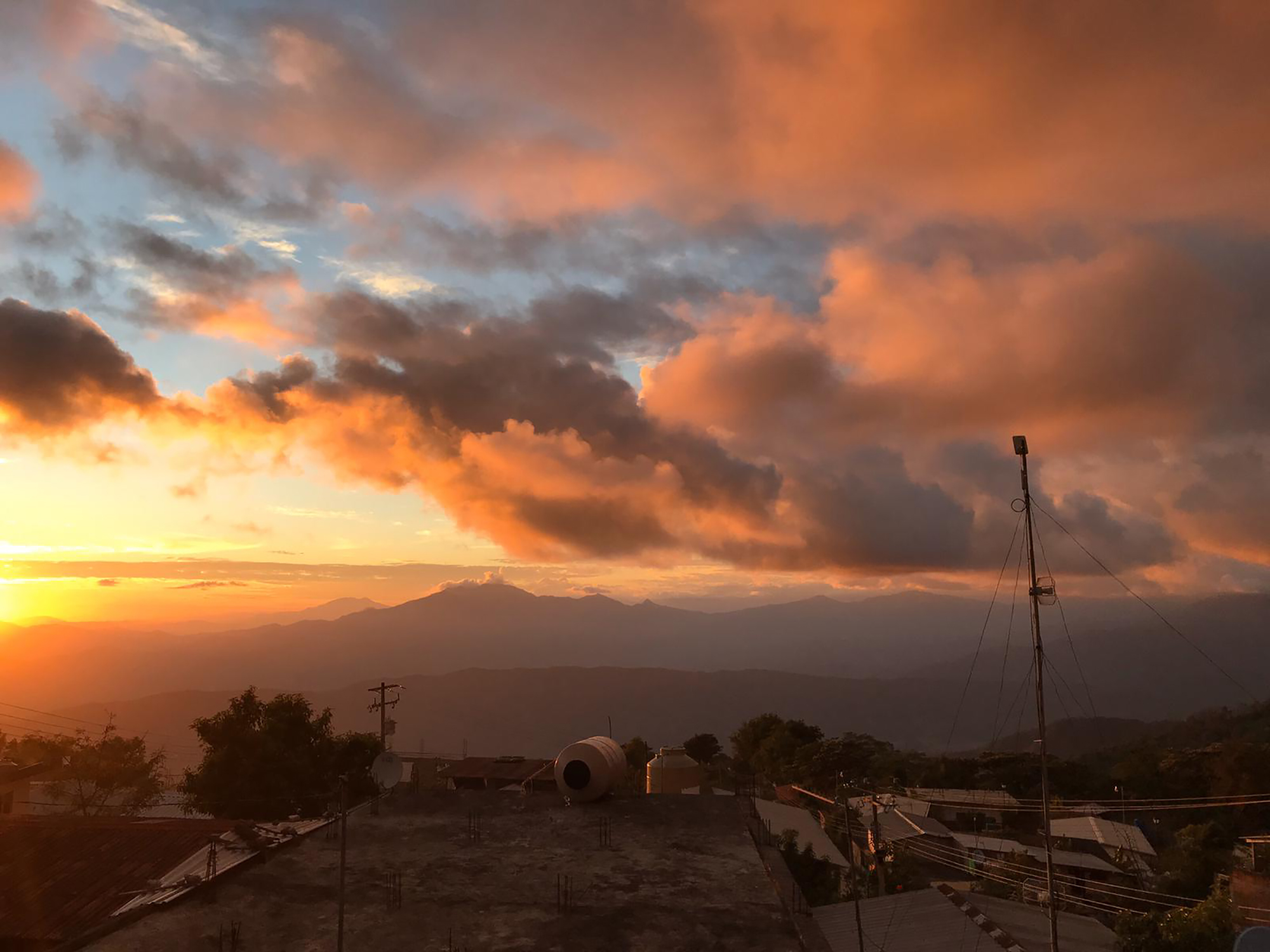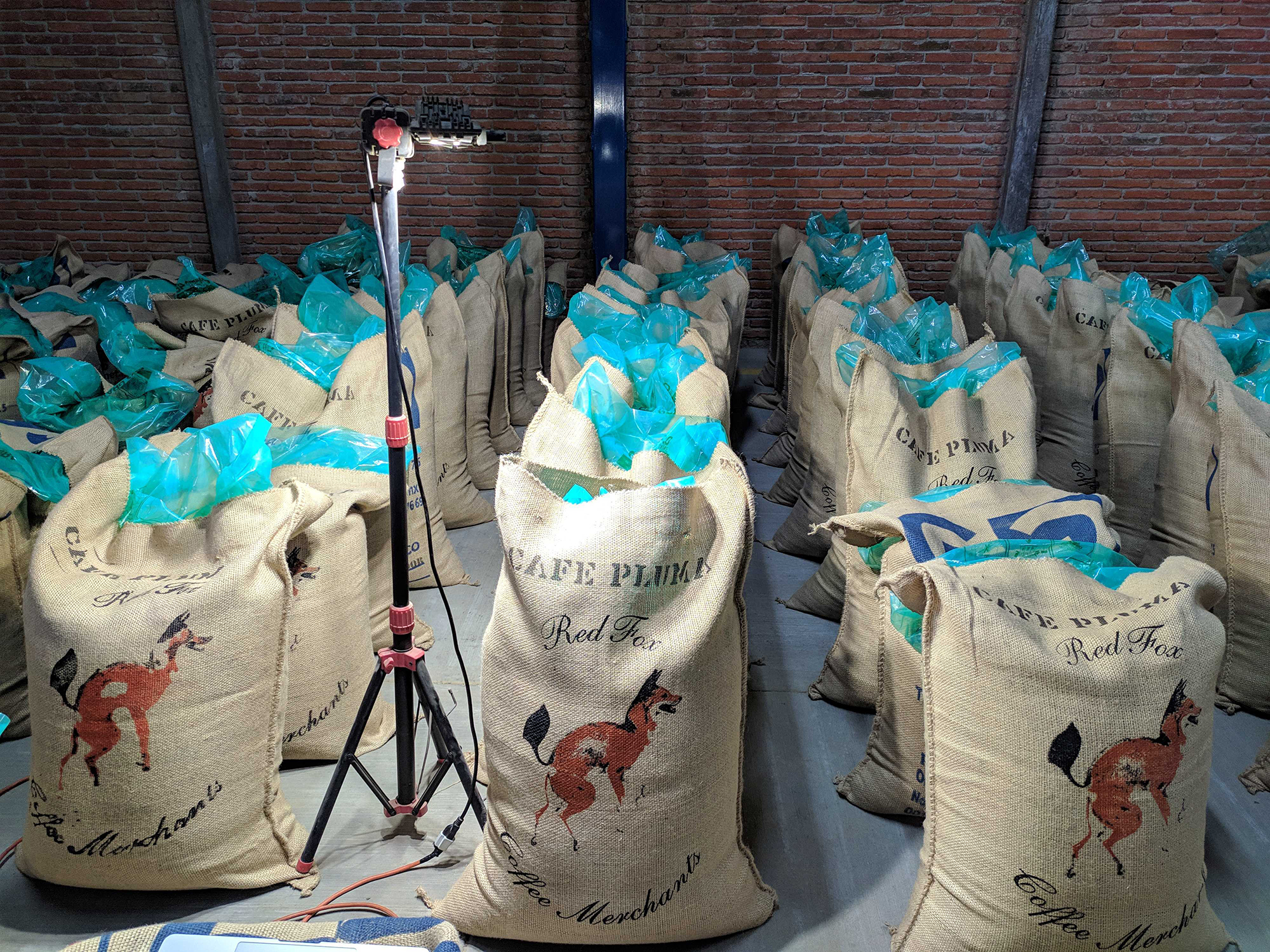In our previous series, Paying for Coffee: It’s Complicated, we talked about the various factors that underpin how we as a sourcing company buy coffee, as well as how to discuss it. While that series looked at the larger picture and laid crucial groundwork for the discussion, this is something we feel we—and the industry at large—need to go deeper on. This series will take a closer look at the details that underpin how we buy coffee in our major supply chains, each of which is unique.
Miramar and Red Fox
Guadalupe Miramar is where it all started for us: our sourcing in Mexico began here. One thing that’s special about this relationship is that it’s not one relationship with a cooperative or person, it’s with the whole community as individuals and families. There are other buyers who work in the region now, but our relationships and consistency have allowed us to maintain the trust we worked to build over the years in an area where many were jaded by past experiences with exploitative buyers and corrupt associations.
Miramar is very different from other associations we’ve written about in previous Paying for Coffee pieces. An informal group of 15 to 20 farmers, we’ve worked with many of them for a few years through a different organization, but this past growing season they formed a new loose association around organizer Cecilio Perez Vasquez. Mexico Sourcing and Sales Lead Adam McClellan first met Cecilio in 2013 when he was acting president of another association in the region. They kept in touch and Adam continued visiting every year, so we were excited to deepen our sourcing in the communities of the Mixteca and Santa Maria Yucuhiti when Miramar formed.
We’ve focused the Paying for Coffee series on a diverse array of our Latin American supply chains to illustrate how support and deep sourcing look different from place to place and group to group. Miramar is the newest association we’re writing about this way, and it’s also the least formal. Whereas other pieces have focused on the community support different organizations provide (and our role in that), the role Miramar plays as an organization is intrinsically different at this stage. That makes them a perfect place to look deeper at not just what we pay, but how we buy in Oaxaca—the location of our new HQ and a place where we see our future.
The Place
Geographically, Guadalupe Miramar is within the Santa Maria Yucuhiti municipality and sits high up on a south/western facing mountain slope. The town is at 1600 masl and farms are located above the town up to 1900 masl and below down to 1100 masl. The coffee we buy is from 1400 masl and above. Miramar is located within the Mixteca zone in the mountainous west of the state of Oaxaca. Mixteca is the name of both the primary indigenous group and the local primary language in Miramar and surrounding communities in Yucuhiti.
What We Pay
While the numbers of what we pay only make up a small piece of the larger sourcing puzzle, they’re still an essential component. As discussed in other Paying for Coffee pieces, the core of our sourcing strategy is setting clear, consistent standards for quality and pricing while creating price structures that incentivize quality production but never punish the more general quality tiers. Prices are a) never, ever connected to the C market price in any way, and b) they are very high to incentivize both quality production and sale to Red Fox over another potential buyer. We want producers who work with us to be able to produce great coffee and thrive from the relationship, and that’s what underpins our pricing.
In the case of Miramar, we’re working with a lot of people who would generally otherwise be selling to coyotes, buyers who collect bulk coffee in parchment for a flat lower price rather than pricing based on quality (they then then sell it to exporters). Coffees we don’t buy either flow into this market or, more rarely, stay in country to be roasted, sold, and consumed locally, a market that continues to grow and provide more stability for farmers.
The farmgate and FOB prices we pay to Miramar, as well as the local price farmers would have received from coyotes, are below.
As discussed in prior Paying for Coffee pieces, we then price in the costs of import, warehousing, and the sales process. Since we typically take full ownership of the coffees and sell them out of the third-party warehouses we carry our coffee in, rather than shipping them directly to a storage facility of a customer’s choosing, we price the coffee ex-warehouse, meaning the price as it comes out of the warehouse.
As part of that equation, we assume full risk for the coffees we buy, committing to their quality and honoring that commitment even if delivered quality is lower than expected. Because we do actually buy the coffees, store them, and sell them rather than simply coordinating sales between customers and vendors, we have to price in the potentially unpredictable costs of third-party warehousing (for instance, if a particular coffee doesn’t sell promptly, we will pay to carry it in the warehouse until it does sell). While that is both a risk and a cost, it’s well worth it in order to be able to support producers and smaller customers at a higher level, buying and selling in quantities that wouldn’t be possible if we didn’t make that commitment. We assume this risk in order to add value to the supply chain, expedite logistics, and strengthen producer relationships.
How We Buy
Cupping, Communication, and Lot Construction
Where many other groups we’ve worked with have internal systems for quality control and analysis, we handle these parts of the process with Miramar. After peak harvest, Cecilio collects samples from each farmer and sends them to the Red Fox office in Oaxaca city, the capital of the state. The farmers’ samples represent what they have in their house at the time including an estimated weight, and we prescreen based on these samples, cupping and scoring everything they send.
We send Cecilio results and he brings everything that scored 84+ down to the warehouse in Oaxaca city, a six hour drive from Miramar. Once we have the full lot in the warehouse, we pull another sample to confirm that water activity and moisture meet our specifications and that the cup quality is consistent. We haven’t yet had situations where the coffee passed the prescreening and didn’t ultimately get purchased, but it’s important for us to make sure.
Even though Miramar’s farmers are smallholders averaging just two hectares each, we cup each individual producer’s coffee separately via signal detection cupping so that we can a) pay up for additional quality and b) carefully build lots that best represent the producers’ individual labor even when their coffees aren’t being sold as single farmer lots. We buy as much of their coffee as possible to support their work at all tiers and help build up and maintain quality standards and best practices over time. The vast majority of their coffees cup out at around 84-85 points and we carefully arrange them into community lots that represent each farmer’s work as best as possible.
We typically meet with Miramar’s farmers at least two times before the samples are delivered to us. Usually, we plan to meet face-to-face to discuss cupping results, but this year that conversation coincided with the pandemic and stay-at-home order, so we had to manage all communication over phone, text, and email.
Payment and Financing
Liquidity is something many smallholder farmers lack, so being transparent and flexible with payment schedules and offering customizable options can make a big difference. We work with one of our local exporter/dry mill partners to provide financing (delivering a first payment for parchment upon collection) and parchment transport to the dry mill. The group can decide if they want to use this option and receive slightly less money on the second and final payment, or organize their own transport and wait to get paid the whole amount once the coffee ships.
Support
As we said before, support looks different with this new and informal group than in many of our other relationships—they’re still determining what their organization looks like and what kind of help would be most effective for them, and as always, we’re taking their lead.
The central type of support we offer in Miramar, as in every origin we work in, is in paying the highest possible prices and letting this group lead their own development projects. We honor the fact that producers are the ones who know their business best by communicating clear quality standards, living by those standards, and then paying the money they earn directly to them for their chosen expenditures, rather than paying slightly less and offering auxiliary services. Many studies in the nonprofit sector validate this approach.
As far as meeting other needs as this group develops, our team offers experience and support where we can. We discussed drying and processing techniques with Miramar members in order to increase awareness of moisture and water activity parameters and cup quality. When a lot of the farmers needed to replant recently, they asked our opinions on which varieties might be a good fit for their operations, and we helped advise them. We also coordinate with the dry mill and exporter when to send a truck to help the farmers bring down their coffee and see if any pre-payments or financing are needed.
Logistics and Shipping
Once the warehouse samples have been approved, the Red Fox logistics and quality control teams work with the exporter to secure a shipping date and get the coffees milled to spec. Once the coffee is milled and bagged in Oaxaca, it travels about five to six more hours to the port of Veracruz or eight to ten hours to Manzanillo.
Paying for Coffee—It’s Complicated
Each supply chain is unique, facing a singular combination of production costs, climate challenges, transit barriers, political issues, and scale factors. That’s why we feel it’s important to go deeper than looking at price alone: all of these factors matter when looking at the strength of a supply chain.
Guadalupe Miramar is a great place to look because they’re so small and new. Their needs and support systems are so different than their slightly larger counterparts in other subregions. We hope to be there as part of the structure helping them grow organically over time, and we expect great things from them as they do.
| Interested in sourcing coffee with us? Reach out at info@redfoxcoffeemerchants.com. To learn more about our work, check out our journal and follow us on Instagram @redfoxcoffeemerchants, Twitter @redfoxcoffee, Spotify, and YouTube. |



